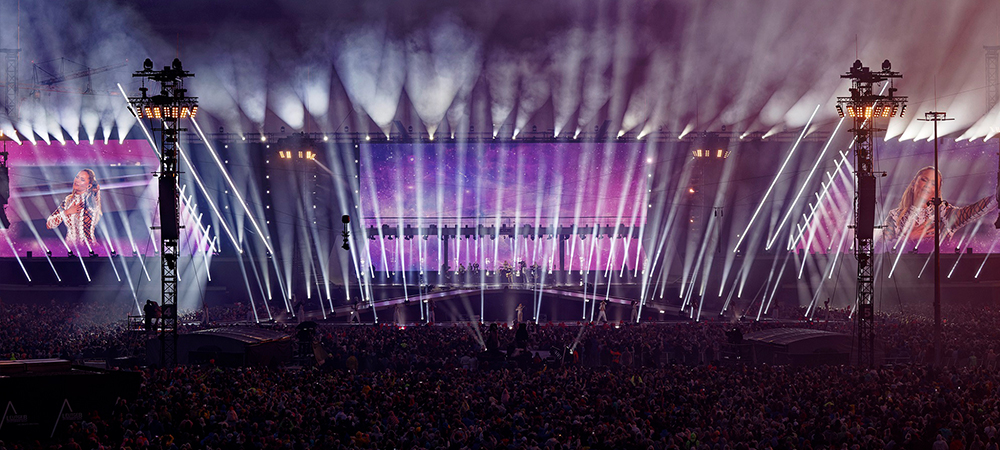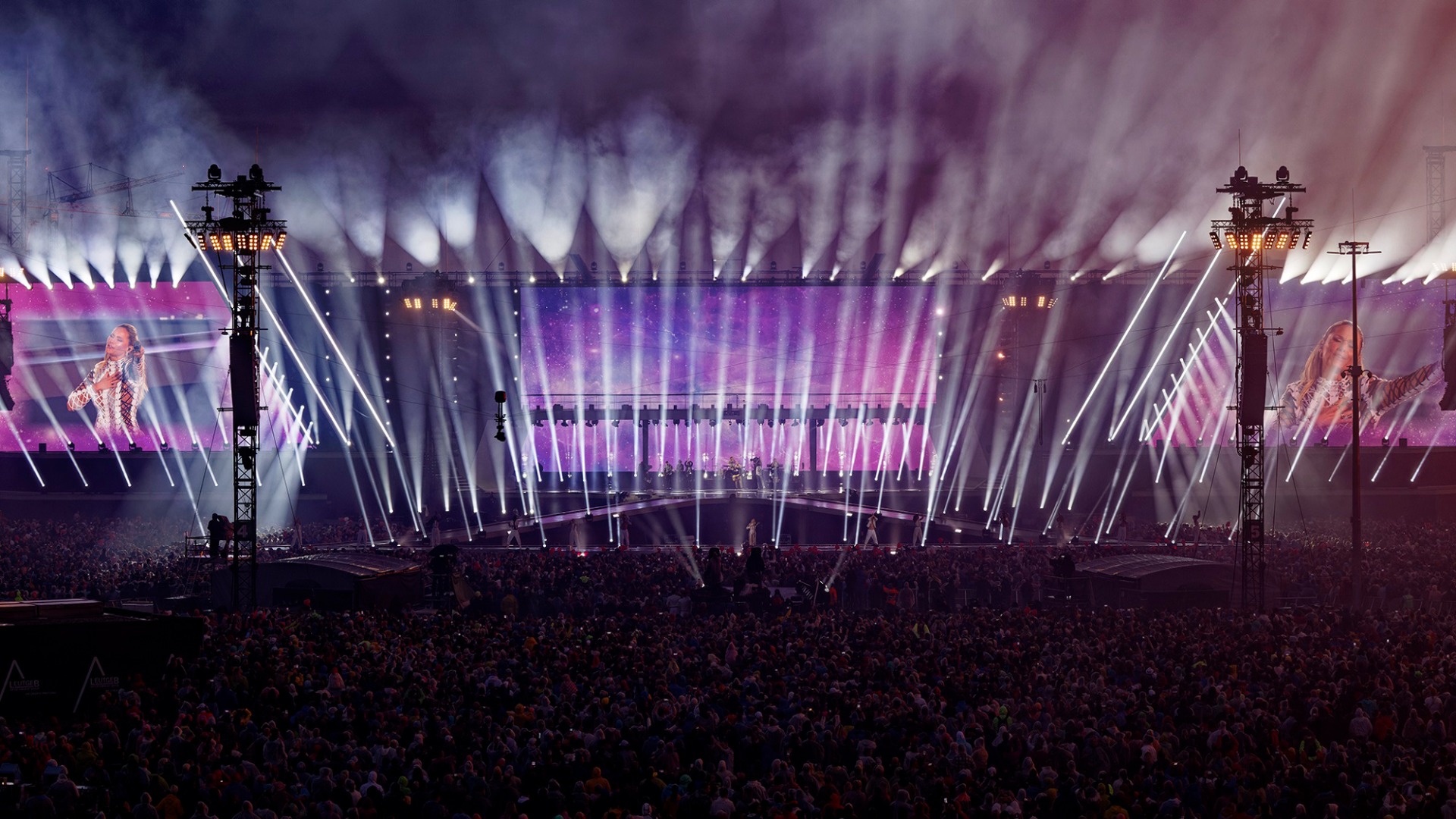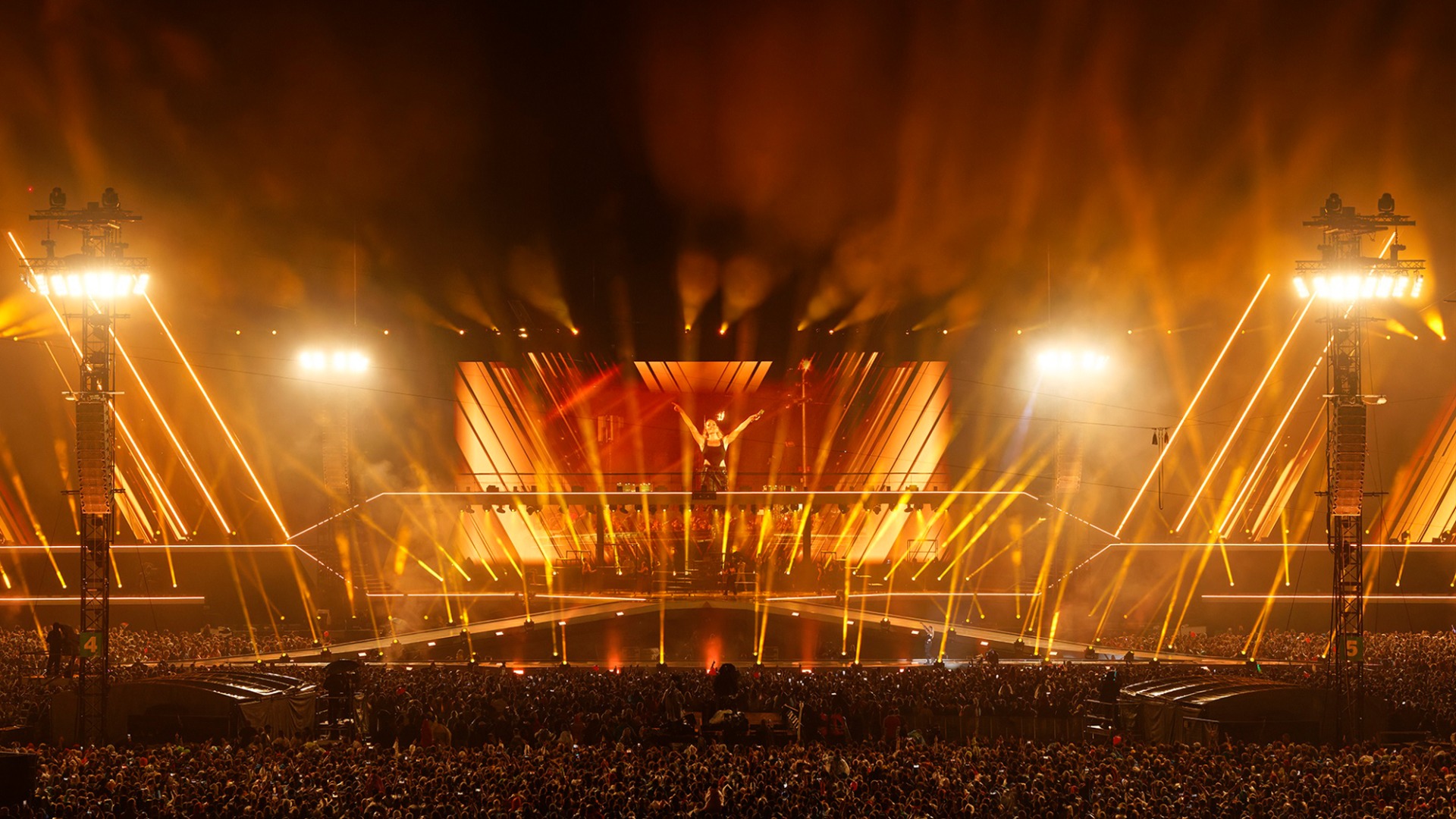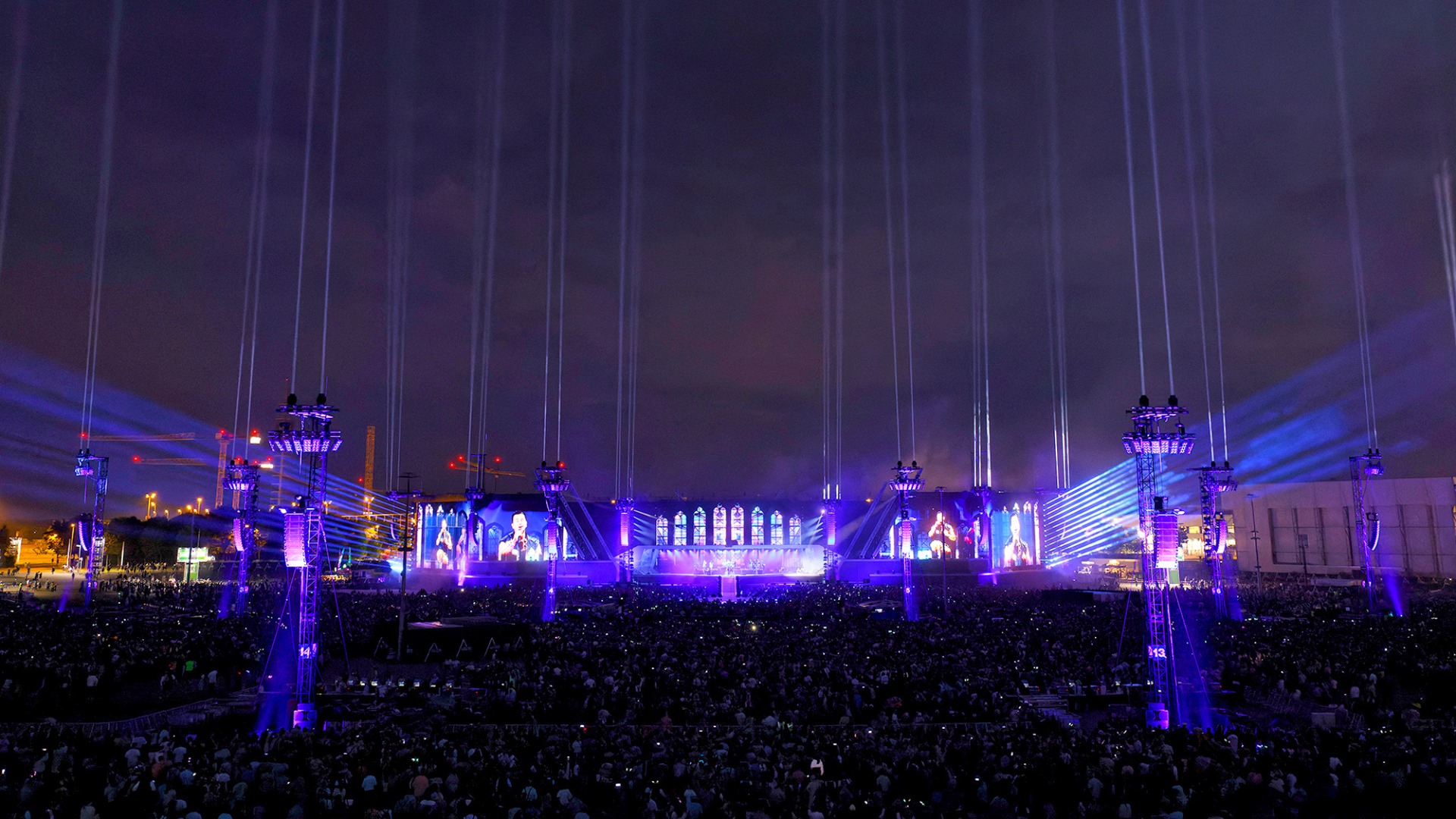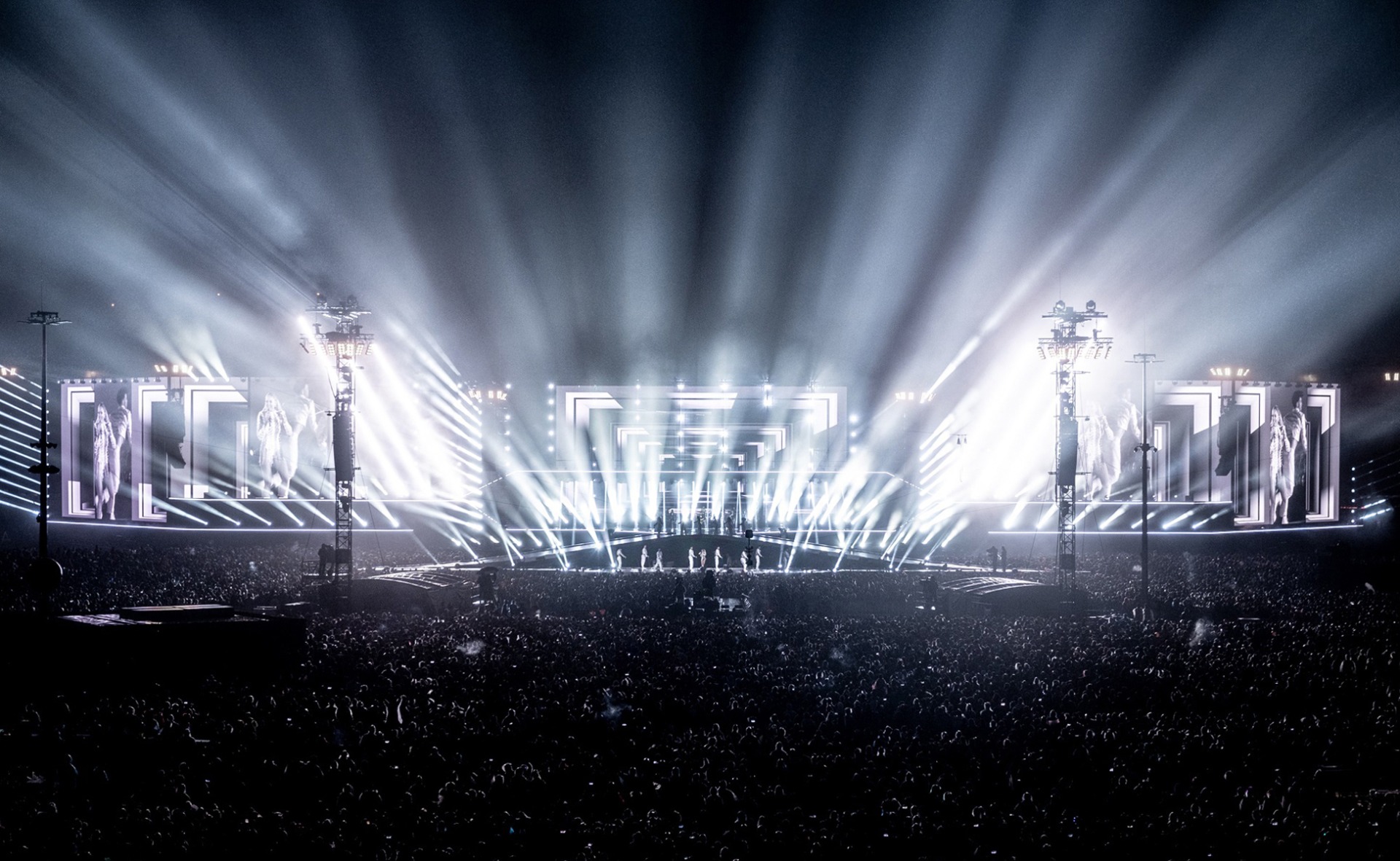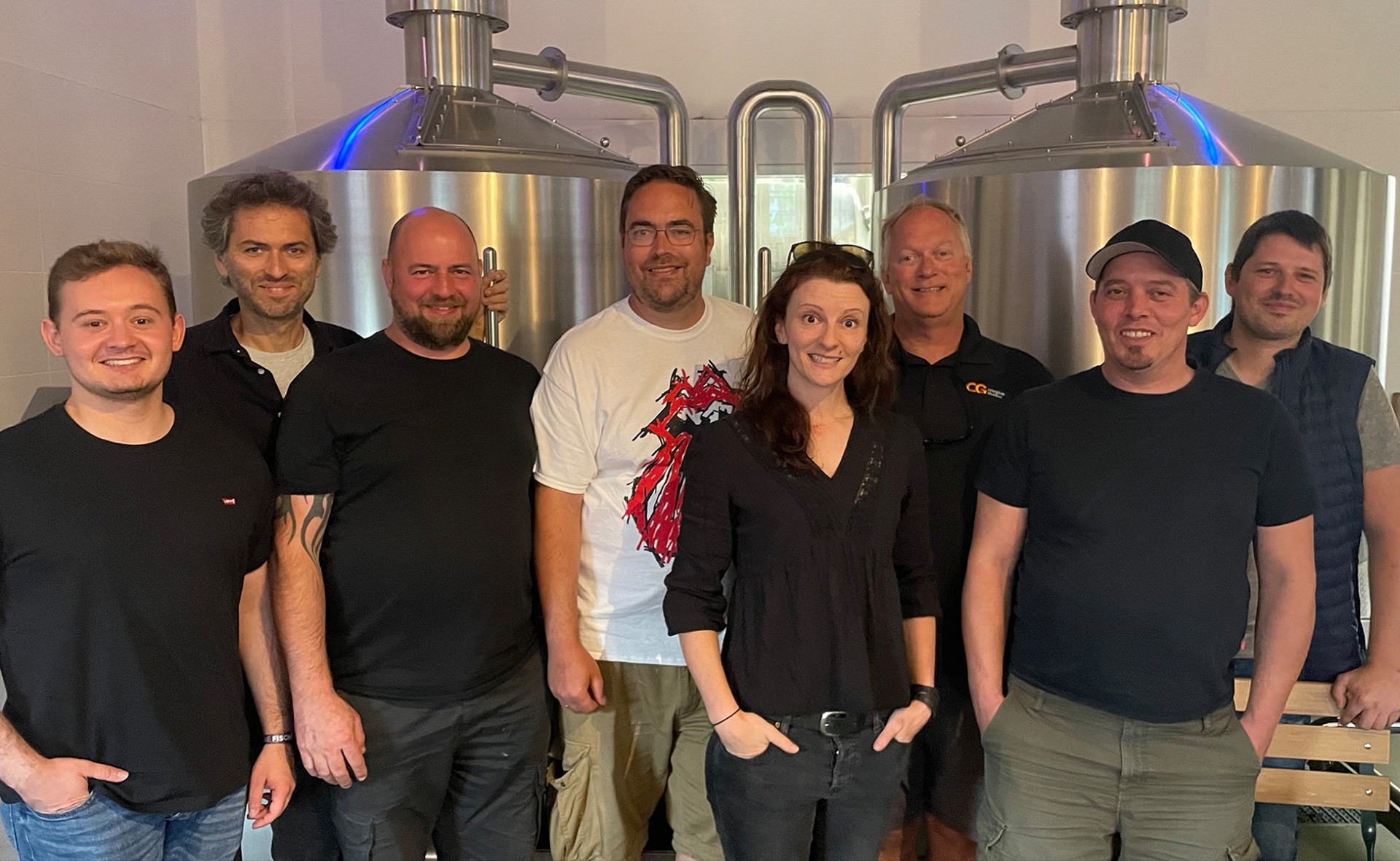Shows by Andreas Gabalier, Helene Fischer and Robbie Williams draw over 300,000 to massive open-air stage at Munich Exhibition Center.
The largest open-air concerts ever held in Munich, and the largest in Germany this year, took place at the Munich Exhibition Center in August with over 300,000 fans total attending shows by Andreas Gabalier, Helene Fischer and Robbie Williams. Roland Greil lit the epic shows and massive 150-meter wide stage using a rig that included over 450 Elation Professional luminaires.
Austrian folk rocker Andreas Gabalier opened the concert series on August 6 with German pop queen Helene Fischer drawing over 130,000 for her performance on August 20 and English pop star Robbie Williams drawing nearly 100,000 to his show on August 27.
Produced by Leutgeb Entertainment Group and a clear sign that live events are undoubtedly back, the concerts were rare hometown gigs for Munich-based LD Roland Greil, a fact that made the shows even more special for the internationally respected lighting and production designer. With a huge 150-meter-wide diamond-shaped stage designed by Florian Wieder - the widest stage for a concert since Rock in Rio in 1994 according to Greil - the shows were truly extraordinary. "It was an ambitious project from promoter Klaus Leutgeb and the Leutgeb Entertainment Group," Greil stated. "These were really landmark shows and even though it really pushed some boundaries, the production elements functioned ideally and everything went very well."
Big crowds, high production value
All told, the Bavaria Sounds concert series drew an estimated 320,000 fans yet the project was always about more than just attracting large crowds. "Klaus really wanted to give fans a high production value," Greil said. "We went in with a good lighting design and Florian did an awesome job on the stage and production design. He would agree with me that if you do outdoor shows in the summer months, where it is harder to hide equipment because of the daylight, it is important to step away from the traditional roof structure and build something more architectural. Whatever you build should look impressive and make a statement by itself and I think we achieved that in a very good way."
From a lighting perspective
It was late in 2021 when Klaus Leutgeb reached out to Greil looking for a partner to handle the lighting and video design for the shows. The challenge, Greil says, was creating three complex stadium size shows at one time. After finding common ground, the designer says there were a few aspects from a lighting perspective that were important to address. "Obviously because of the sheer size of the stage, everything we used had to be have real firepower to make it work on this scale," he stated. "Furthermore, every single unit had to fulfill a specific purpose - light the architecture for example or create specific looks. And because these were three very different artists, the rig had to be versatile enough to create three different looking shows."
Greil handled the overall show lighting design for the Andreas Gabalier and Helene Fischer shows and handed the setup over to LD Matt Pitman for the Robbie Williams show. "It was important that the design gave him everything he needed as well," he added. The icing on the cake, he says, was that they weren't only lighting for the live crowd, they had to take into consideration the 25 cameras that filmed Helene Fischers's show for TV broadcast and a future DVD.
IP65 a must
On top of that, because the stage design had no real roof and therefore no weather protection-Greil says that perhaps 80% of the fixtures were fully exposed to rain-fully weatherproof IP65 fixtures were a must. The rig featured a large number of Elation IP-rated lights, over 450 in total - 171 Proteus Maximus™, 106 Proteus Excalibur™, 76 Proteus Hybrid™ and 100 Arena Zoom Q7IP™. Lighting vendor for the project was Clair Bros with support from Christie Lites.
Greil has used the Maximus before - "it's a proven, high power, versatile hybrid light that gives you a lot" - and placed them across lengths of header truss, on the backwall, on diagonals that framed the stage, and on the floor. They provided everything from beams and traditional spot looks to softer washlighting. The Proteus Hybrid, another multifunctional fixture he has past experience with, "has a small form factor that worked well from floor positions and also worked from positions in the stage fascias."
Proteus Excalibur
A new fixture for him however was the Proteus Excalibur, Elation's super bright full-featured beam fixture. "Without a roof, at this sheer scale, we wanted to create a lighting frame around the stage and also extend whatever look on stage into the audience as well as into the sky," the designer explains. "We were looking for a substitute for the traditional outdoor beam searchlight but wanted something with a big front lens and the Excalibur has that. They have a good look and feel and really cut the deal for us on this project."
Lighting extended into the audience in the form of 20 PA delay towers which were also used for lighting positions with each tower housing a pair of Excaliburs to immerse the audience in the overall look and feel of the show. Generally used for sky beam looks, the designer also had them cover the audience in breakup patterns and even focused them onto Helene Fischer's C Stage to draw the focus there.
Arena Zoom Q7IP
At the upstage end of the stage, behind the band and the performance area, was a massive backwall fully clad with black fabric. Here, Greil integrated Proteus Maximus and LED wash/blinder/strobe lights, as well as Elation Arena Zoom Q7IP, outdoor-rated RGBW PAR lights. "I wanted to have a different look there so I integrated 100 of the Arena Zooms which is also a really nice light, again because of the output and brightness. Although they were in the background and is just an LED PAR, it held up well against all those high brightness fixtures we used in the overall design."
Greil says that even though there were fixture types in the rig that he hadn't used before-although he had researched and demoed them-he felt he picked the right fixtures for these shows. "I was really positively surprised," he said, adding that fixture choice also came down to what was available on the market and in sufficient quantities "but there too we succeeded quite well."
The stage also featured a large backdrop video wall with large video walls either side of the stage-architectural pieces that played background content embedded with IMAG. The upstage center screen was semi-transparent which allowed light to shine through for pure lighting looks or in combination with video. Six additional screens for IMAG were spread across the property. Greil and the team handled all the content produced by various content creating companies for the show, including integration of the IMAG.
Exposed for a month
About 90% of the setup was the same for all three shows, Greil says, with the thrust into the audience different for each artist and Helene Fischer adding a C Stage and other technical elements as the only elements that changed in between the shows. The lighting was rigged in late July and exposed until load out on August 28th. "We had a nearly two week break between show one and show two and when we came back we turned it on and it worked! I've been involved in many stadium shows and outdoor shows and we always had to deal with the problems of not having IP rated products. Here we had about 400 moving lights exposed to rain and we had no issues with the lights at all, and didn't have to use any ugly looking covers."
Greil has had a busy year working with acts such as the Rolling Stones, Genesis, German rockers Rammstein for whom he is the co-lighting designer, and most recently the Bavaria Sounds Concerts, and is now enjoying a well-earned break. He concludes, "It was definitely challenging but thanks to a great team we fought all the battles and delivered three great shows. Everyone who was involved with this project should be proud of what we achieved."
Credits
Vendors:
• Lighting, Audio and Video: Clair Bros/ Audio Rent | Philipp Kaetel (with support from Faber AV and Christie Lites)
• Stage: Stageco | Dirk Lauenstein
• Set: Unbranded | Antoine de Haas
• Automation: Stagekinetik | Jens Buller
• Pyro: Pyro Unlimited | Joe Becker
Production:
• Promoter: Klaus Leutgeb | Leutgeb Entertainment Group
• Production Director: Frank Mahler
• Production Manager: Howard Hopkins
Creative:
• Lighting & Video Design: Roland Greil
• Production Design: Florian Wieder & Cuno von Hahn | Wieder Design
• Associate Lighting Designer: Troy Eckerman
• LX Programmer: Klaus Kubesch & Michael Kuehbandner
• Video Programmer: Tom Levin & Leo Herrmann
• Video Director: Haegar Deutsch
• Technical Director: Jeremy Lloyd & Nick Evans | Wonderworks
Photos 1, 2, 3: Manfred H. Vogel
Photo 4: Wieder Design


